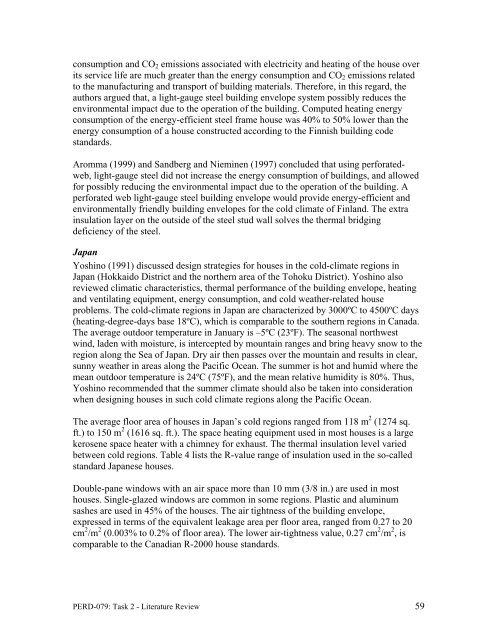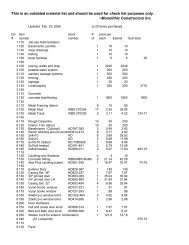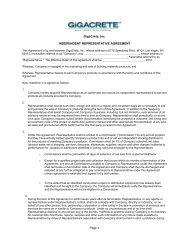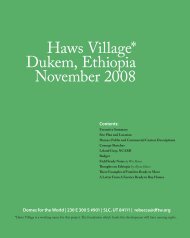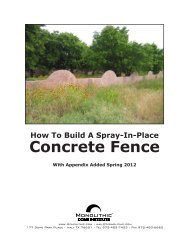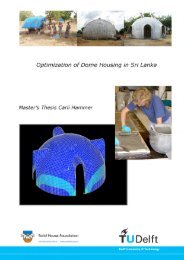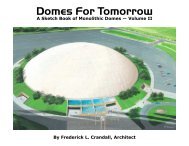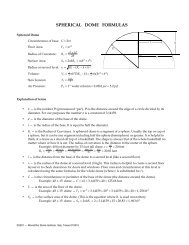Literature Review on Building Envelope, Heating and ... - Beeshive.org
Literature Review on Building Envelope, Heating and ... - Beeshive.org
Literature Review on Building Envelope, Heating and ... - Beeshive.org
Create successful ePaper yourself
Turn your PDF publications into a flip-book with our unique Google optimized e-Paper software.
c<strong>on</strong>sumpti<strong>on</strong> <strong>and</strong> CO 2 emissi<strong>on</strong>s associated with electricity <strong>and</strong> heating of the house over<br />
its service life are much greater than the energy c<strong>on</strong>sumpti<strong>on</strong> <strong>and</strong> CO 2 emissi<strong>on</strong>s related<br />
to the manufacturing <strong>and</strong> transport of building materials. Therefore, in this regard, the<br />
authors argued that, a light-gauge steel building envelope system possibly reduces the<br />
envir<strong>on</strong>mental impact due to the operati<strong>on</strong> of the building. Computed heating energy<br />
c<strong>on</strong>sumpti<strong>on</strong> of the energy-efficient steel frame house was 40% to 50% lower than the<br />
energy c<strong>on</strong>sumpti<strong>on</strong> of a house c<strong>on</strong>structed according to the Finnish building code<br />
st<strong>and</strong>ards.<br />
Aromma (1999) <strong>and</strong> S<strong>and</strong>berg <strong>and</strong> Nieminen (1997) c<strong>on</strong>cluded that using perforatedweb,<br />
light-gauge steel did not increase the energy c<strong>on</strong>sumpti<strong>on</strong> of buildings, <strong>and</strong> allowed<br />
for possibly reducing the envir<strong>on</strong>mental impact due to the operati<strong>on</strong> of the building. A<br />
perforated web light-gauge steel building envelope would provide energy-efficient <strong>and</strong><br />
envir<strong>on</strong>mentally friendly building envelopes for the cold climate of Finl<strong>and</strong>. The extra<br />
insulati<strong>on</strong> layer <strong>on</strong> the outside of the steel stud wall solves the thermal bridging<br />
deficiency of the steel.<br />
Japan<br />
Yoshino (1991) discussed design strategies for houses in the cold-climate regi<strong>on</strong>s in<br />
Japan (Hokkaido District <strong>and</strong> the northern area of the Tohoku District). Yoshino also<br />
reviewed climatic characteristics, thermal performance of the building envelope, heating<br />
<strong>and</strong> ventilating equipment, energy c<strong>on</strong>sumpti<strong>on</strong>, <strong>and</strong> cold weather-related house<br />
problems. The cold-climate regi<strong>on</strong>s in Japan are characterized by 3000ºC to 4500ºC days<br />
(heating-degree-days base 18ºC), which is comparable to the southern regi<strong>on</strong>s in Canada.<br />
The average outdoor temperature in January is –5ºC (23ºF). The seas<strong>on</strong>al northwest<br />
wind, laden with moisture, is intercepted by mountain ranges <strong>and</strong> bring heavy snow to the<br />
regi<strong>on</strong> al<strong>on</strong>g the Sea of Japan. Dry air then passes over the mountain <strong>and</strong> results in clear,<br />
sunny weather in areas al<strong>on</strong>g the Pacific Ocean. The summer is hot <strong>and</strong> humid where the<br />
mean outdoor temperature is 24ºC (75ºF), <strong>and</strong> the mean relative humidity is 80%. Thus,<br />
Yoshino recommended that the summer climate should also be taken into c<strong>on</strong>siderati<strong>on</strong><br />
when designing houses in such cold climate regi<strong>on</strong>s al<strong>on</strong>g the Pacific Ocean.<br />
The average floor area of houses in Japan’s cold regi<strong>on</strong>s ranged from 118 m 2 (1274 sq.<br />
ft.) to 150 m 2 (1616 sq. ft.). The space heating equipment used in most houses is a large<br />
kerosene space heater with a chimney for exhaust. The thermal insulati<strong>on</strong> level varied<br />
between cold regi<strong>on</strong>s. Table 4 lists the R-value range of insulati<strong>on</strong> used in the so-called<br />
st<strong>and</strong>ard Japanese houses.<br />
Double-pane windows with an air space more than 10 mm (3/8 in.) are used in most<br />
houses. Single-glazed windows are comm<strong>on</strong> in some regi<strong>on</strong>s. Plastic <strong>and</strong> aluminum<br />
sashes are used in 45% of the houses. The air tightness of the building envelope,<br />
expressed in terms of the equivalent leakage area per floor area, ranged from 0.27 to 20<br />
cm 2 /m 2 (0.003% to 0.2% of floor area). The lower air-tightness value, 0.27 cm 2 /m 2 , is<br />
comparable to the Canadian R-2000 house st<strong>and</strong>ards.<br />
PERD-079: Task 2 - <str<strong>on</strong>g>Literature</str<strong>on</strong>g> <str<strong>on</strong>g>Review</str<strong>on</strong>g> 59


